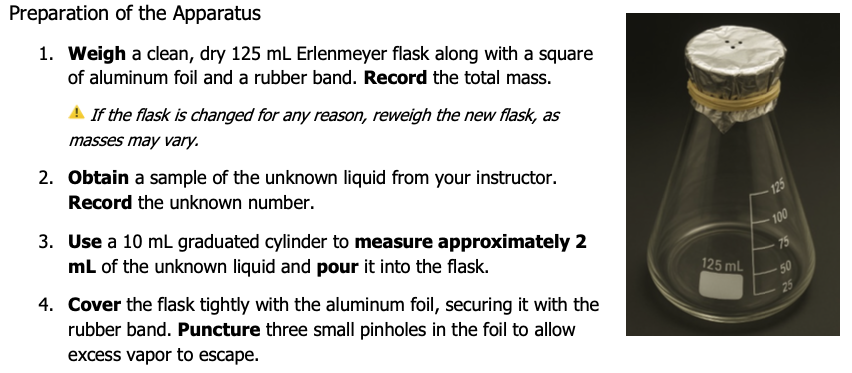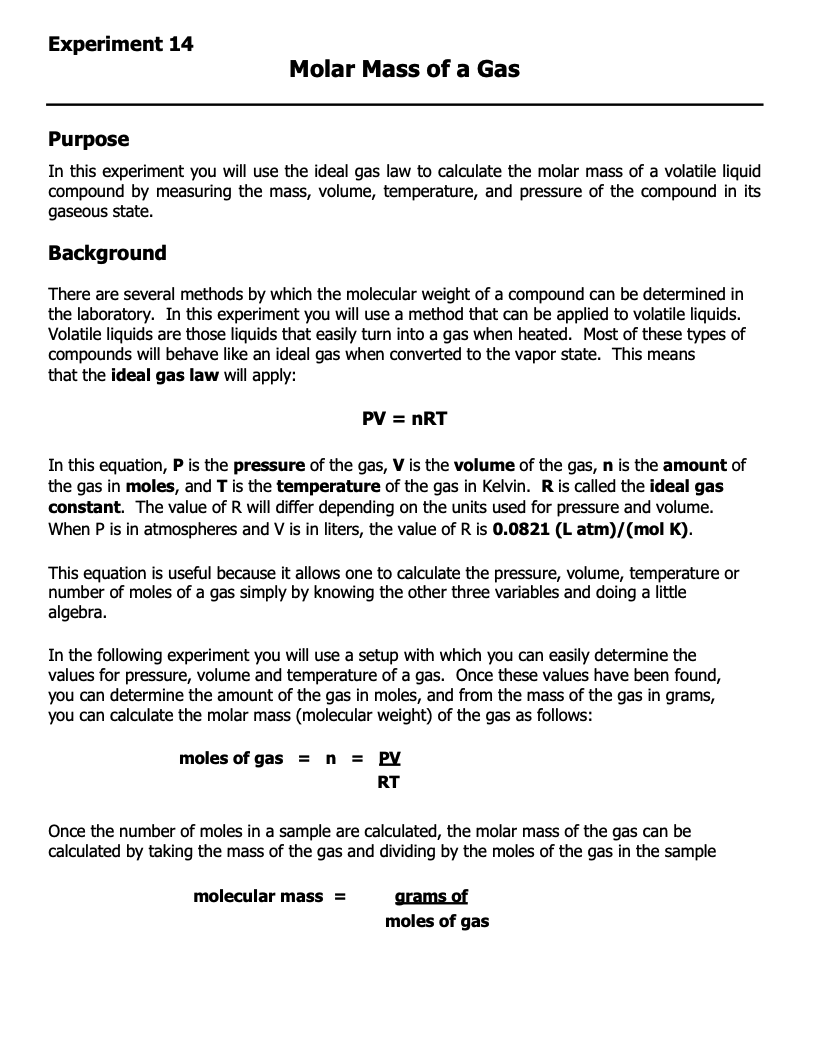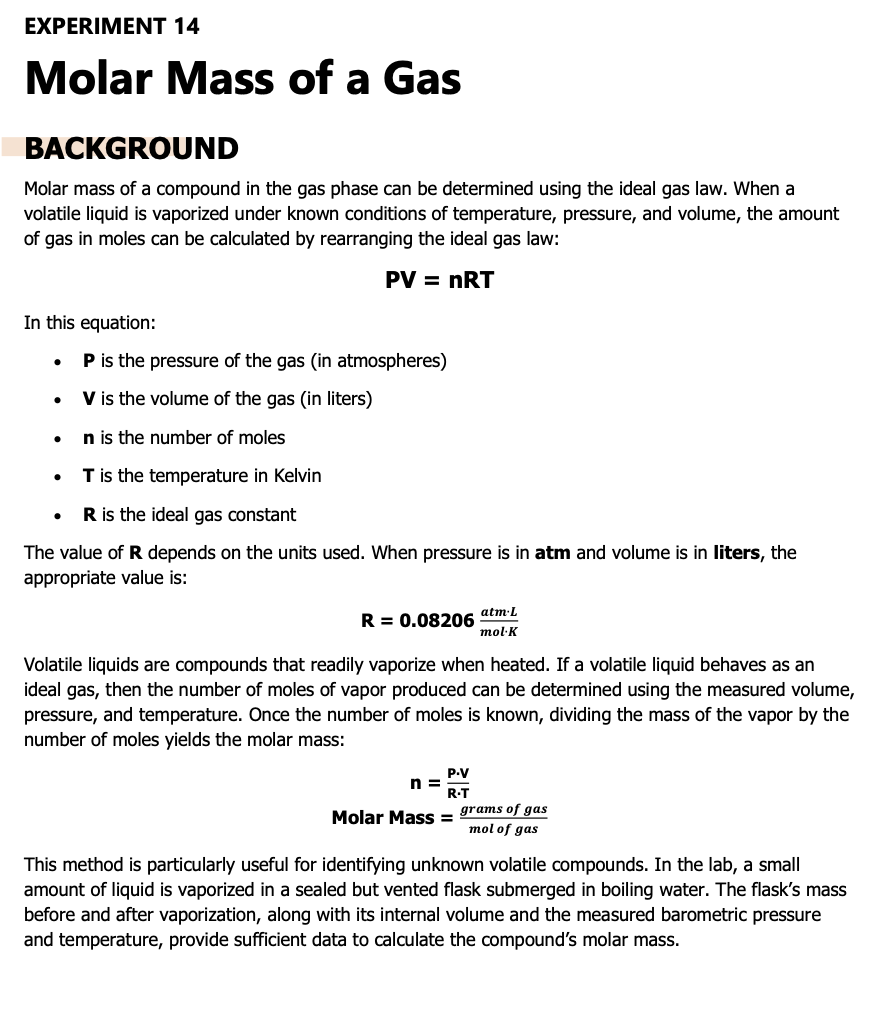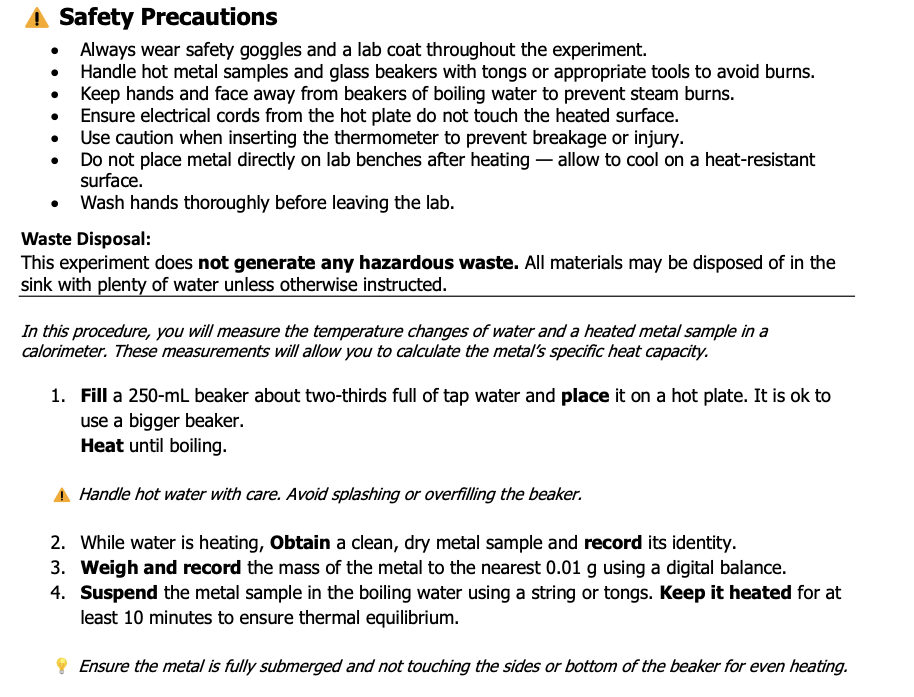Context and Motivation
When I began teaching CHEM V101 (formerly V20L), I noticed that some parts of the existing lab manual could be clearer or more consistent. The manual worked well overall, but as I used it repeatedly, small differences in layout, tone, and structure became more noticeable. Below are some of the areas where I saw potential for improvement in readability, organization, and digital usability:
- Structural inconsistency: Each lab used different headings, layouts, and section sequences. Some combined background and procedures, while others split them across pages.
- Mixed writing style: Commands and passive statements alternated without pattern (“Fill out the table below.” vs. “The density is determined by measuring mass and volume.”), creating uneven tone and flow.
- Visual imbalance: Dense text blocks, tight spacing, and mismatched tables made the pages look cluttered and dated.
These weren’t problems that prevented teaching, but they stood out to me as opportunities. Because I got used with the materials, I could see where the design and structure could do more to support clarity and visual coherence. The project started simply from that curiosity: I wanted to see if I could make the manual look and feel better—cleaner, more consistent, and easier for anyone to edit later.
Design Objectives
The project focused on two main goals: consistency and readability.
I wanted the manual to look cohesive from start to finish and to read more like a modern lab workbook rather than a patchwork of old edits.
Specific design choices included:
Step-based procedures:
Paragraph-style instructions were rewritten into numbered steps. Each step starts with an action verb (e.g., Measure, Record, Mix), making it easier to follow during lab work.
 |
Simplified background text:
Removed unnecessary filler or repeated explanations while keeping the conceptual context students actually need. The result reads cleaner and wastes less space.
| Before Redesign | After Redesign |
 |
 |
Visual cues:
Added small icons (⚠️ Caution, 💡 Note, etc.) to highlight safety reminders or procedural tips without interrupting the main text. These icons replaced long inline warnings, making the layout cleaner and easier to scan.
 |
Development Process
The revision was completed over the summer of 2025, so the new version could be used starting in the Fall semester. It wasn’t one large overhaul but a steady, organized series of updates that built on each other.
Phase 1
Mapping the old manual
Phase 1
Mapping the old manual
I reviewed each experiment to identify duplicated text, inconsistent numbering, and layout variations.
Each issue was logged in a tracking sheet to plan the rewrite sequence and ensure nothing was missed.
Phase 2
Building the visual style guide
Phase 2
Building the visual style guide
I first experimented in InDesign, testing fonts, spacing, and layouts modeled after magazine templates.
That phase helped define a cleaner visual direction.
However, since the manual needed to stay editable for other instructors, I recreated the entire design in Microsoft Word, replicating the structure with Word’s style tools.
Phase 3
Rewriting and formatting
Phase 3
Rewriting and formatting
Each lab was rewritten using the new structure—shorter background sections, clear step lists, standardized headers, and redesigned data tables.
Notes and caution boxes were added where necessary, and numbering was checked for every section.
Phase 4
Compilation and deployment
Phase 4
Compilation and deployment
All fifteen labs were compiled into a single, fully formatted document and distributed through Canvas before the start of Fall 2025.
Follow-Up Findings (Fall 2025 Trial Phase)
After the manual was implemented in Fall 2025, several quality-control issues appeared that hadn’t surfaced during the summer edit. They were mostly alignment and cross-reference errors that affected how sections connected across labs.
Main issues identified:
- Cross-reference mismatches: A few Pre-Lab questions still referred to outdated Procedure steps from the earlier version.
- Step numbering drift: Step counts occasionally carried over between labs (for example, Lab 2 starting from Step 24).
- Minor formatting and wording errors: Typos, inconsistent table captions, and a few missing units in example calculations.
Because all fifteen labs had been revised in one round, patching them quickly caused new inconsistencies. To prevent confusion during the semester, I decided to roll back to the previous version and formally communicate the issue to all CHEM V101 instructors.
I sent an email to the department acknowledging the oversight and sharing both the Dropbox link to the working files and the previous version stored in the Chemistry department Canvas. In the message, I apologized for the inconvenience, thanked colleagues for their patience, and invited their feedback before republishing. I also offered two review options—either printed copies for markup or a shared Google Doc for direct editing—to make collaboration easier and avoid adding unnecessary workload.
Iteration and Next Phase (Winter 2025 – Spring 2026)
After the Fall trial, I decided not to rush another round of fixes. Instead, I planned a full winter revision cycle focused on quality control, cross-reference automation, and instructor feedback integration.
Planned actions:
- Cross-reference validation: Rebuild numbering and internal links so that all Pre-Lab, Procedure, and Post-Lab items connect correctly.
- QA workflow: Develop a checklist system to verify units, calculation samples, and table consistency before final compilation.
- Collaborative review: Share the draft with fellow V101 instructors for collective feedback before publication.
- Version control: Assign clear version numbers and changelogs so instructors know exactly which edition they are using.
The goal for this phase is not simply to “fix errors,” but to establish a stable process that prevents them from recurring. By Spring 2026, the revised manual will go through another round of peer review, with the final launch planned for Summer 2026.